During the age of dinosaurs, Earth was home to creatures of staggering proportions. While we often think of towering dinosaurs like Brachiosaurus or the fearsome Tyrannosaurus rex when imagining this era, other remarkable animals shared this ancient world. Among them were turtles of extraordinary size, some rivaling modern vehicles in their dimensions. These prehistoric chelonians represent fascinating examples of the megafauna that once dominated our planet, showcasing the extreme biological possibilities that evolved under different environmental conditions. Their massive shells, impressive lifespans, and remarkable adaptations continue to captivate paleontologists and turtle enthusiasts alike, offering valuable insights into the evolution of reptiles and the diverse ecosystems of the Mesozoic Era.
The Mesozoic Giants: Introducing Car-Sized Turtles

The Mesozoic Era, spanning from approximately 252 to 66 million years ago, witnessed the evolution of some truly gigantic turtle species. The most notable among these colossal chelonians was Archelon ischyros, a sea turtle that reached dimensions comparable to a small car. With a shell length measuring up to 15 feet (4.6 meters) from tip to tail and a flipper span approaching 20 feet (6 meters), Archelon dwarfed today’s largest turtles. Another remarkable giant was Stupendemys geographicus, a freshwater species that appeared later in the timeline but still overlapped with dinosaurs in some regions. These massive turtles weren’t simply scaled-up versions of modern species; they represented specialized evolutionary paths adapted to specific ecological niches during a time when many animal groups were experimenting with gigantism. Their existence challenges our perceptions of what we typically consider “turtle-sized” and demonstrates the remarkable diversity of reptilian life during this period.
Archelon: The Marine Behemoth
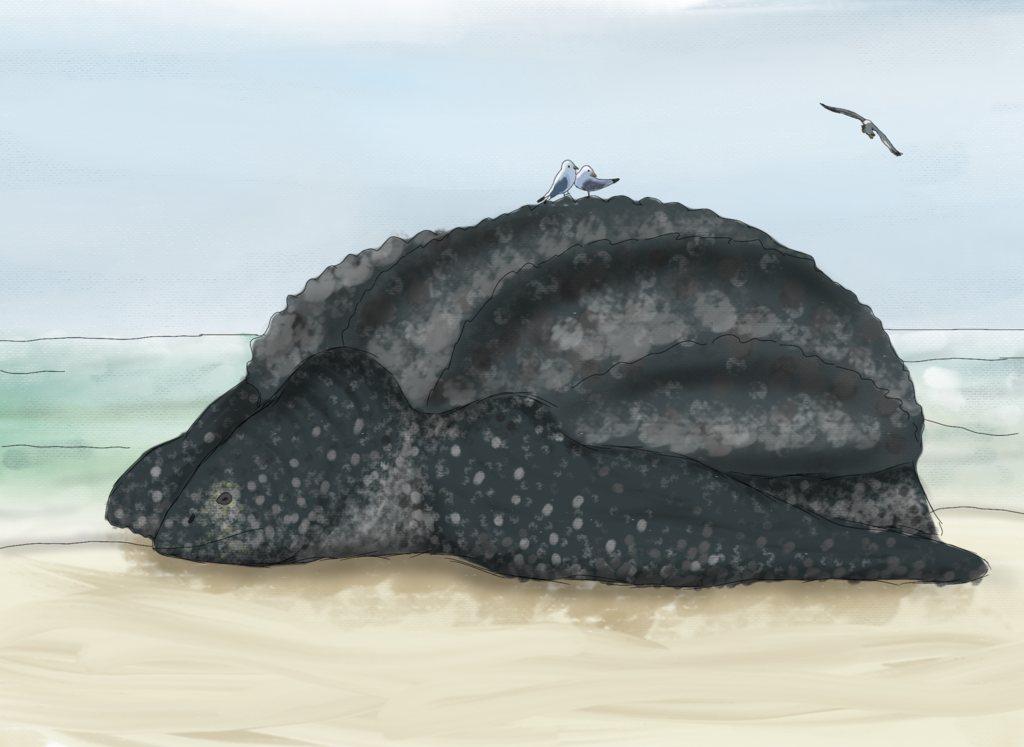
Archelon ischyros stands as perhaps the most impressive turtle to ever navigate Earth’s oceans. Living during the Late Cretaceous period, approximately 75-65 million years ago, this marine giant swam alongside mosasaurs and plesiosaurs in the Western Interior Seaway that divided North America. Unlike modern turtles with solid shells, Archelon possessed a leathery carapace supported by a skeletal framework, similar to today’s leatherback turtles but on a much grander scale. The largest Archelon specimens discovered had skulls measuring nearly 3 feet (1 meter) in length alone, equipped with a powerful beak-like structure for crushing hard-shelled prey. Fossil evidence suggests these giants fed primarily on ammonites, squid, and other marine invertebrates that flourished in the prehistoric seas. Archelon’s massive flippers and streamlined body enabled it to move efficiently through the water despite its enormous size, making it a formidable oceanic predator during the twilight of the dinosaur era.
Stupendemys: The Freshwater Giant
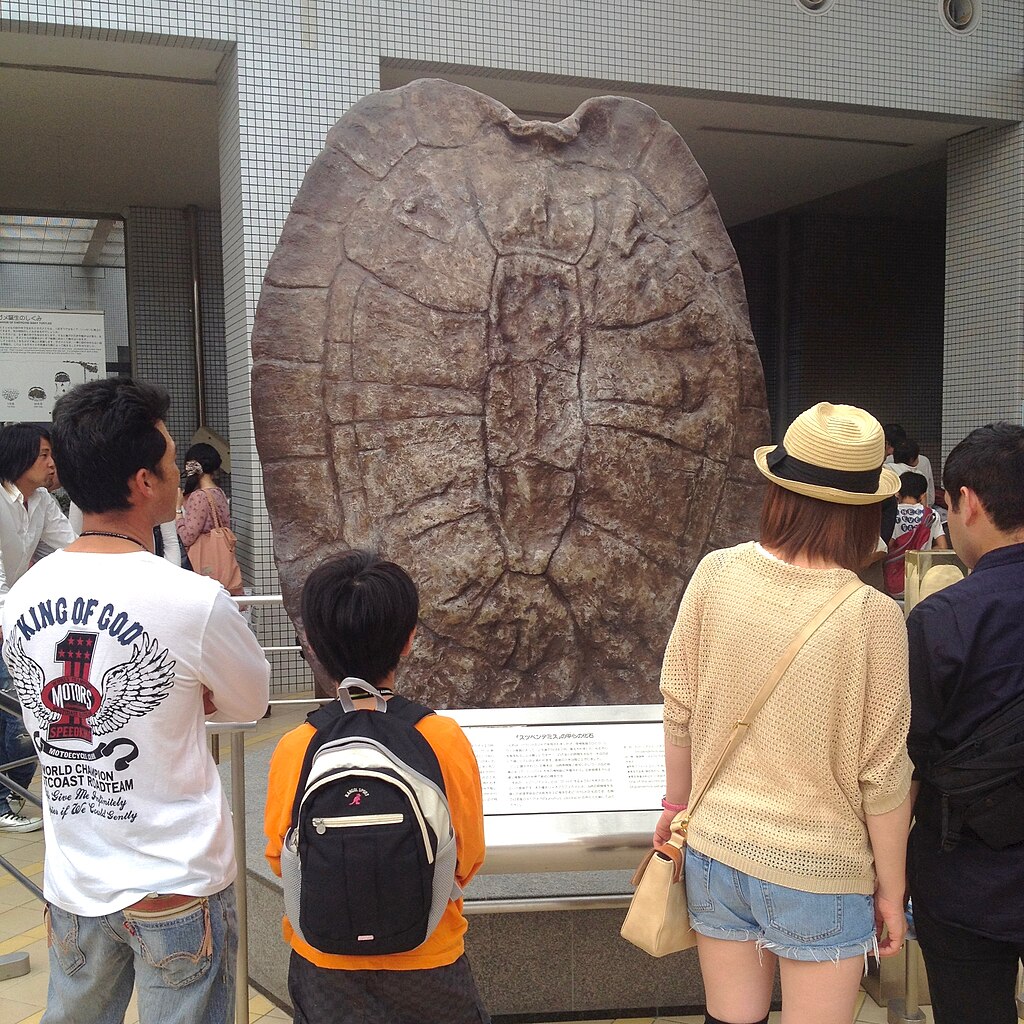
While Archelon ruled the prehistoric oceans, the freshwater environments had their own turtle titan: Stupendemys geographicus. This enormous chelonian inhabited the northern regions of South America during the late Miocene and Pliocene epochs, between 5-10 million years ago. Though appearing after the dinosaurs’ extinction, Stupendemys represents the continuation of the megafauna trend established during the Mesozoic Era. Its shell alone measured up to 11 feet (3.3 meters) in length, making it larger than many small cars. Male Stupendemys specimens featured distinctive horned protuberances on their shells, likely used during combat with rivals or as defensive structures. These freshwater giants inhabited large river systems and lakes in what is now Venezuela and Colombia, areas that would eventually develop into the Amazon River basin. Paleontologists believe Stupendemys was primarily herbivorous, using its massive size to deter predators while grazing on aquatic vegetation in the rich tropical ecosystems of prehistoric South America.
Carbonemys: The “Coal Turtle” Predator

Another remarkable giant from South America’s prehistoric waterways was Carbonemys cofrinii, aptly nicknamed the “coal turtle” due to being discovered in a coal mine in Colombia. Living approximately 60 million years ago, shortly after the dinosaurs’ extinction, Carbonemys continued the lineage of massive turtles that began during the Mesozoic. With a shell measuring around 5.9 feet (1.8 meters) in length and a skull larger than a football, this freshwater predator was an apex species in its habitat. Unlike some other giant turtles that were primarily plant-eaters, Carbonemys evolved powerful jaws capable of delivering bone-crushing bite force. This fearsome adaptation allowed it to prey upon crocodilians and other large animals that shared its environment. The massive size of Carbonemys likely evolved as a response to the equally large predators in its ecosystem, including titanoboa, the largest snake ever discovered. In the aftermath of the dinosaur extinction, these enormous turtles helped fill ecological niches left vacant by the disappearance of many large reptilian predators.
Evolutionary Advantages of Gigantism

The remarkable size of dinosaur-era turtles wasn’t merely a biological curiosity but represented significant evolutionary advantages in their respective environments. Gigantism provided these ancient chelonians with protection against predators, as few creatures could threaten a turtle the size of a small car. For marine species like Archelon, larger body size improved thermal regulation, allowing them to maintain more stable internal temperatures in varying ocean conditions and undertake longer migrations between feeding and nesting grounds. Increased size also correlated with longer lifespans, giving these turtles more reproductive seasons and greater lifetime reproductive success. Additionally, larger bodies could support proportionally larger brains, potentially allowing for more complex behaviors and problem-solving abilities compared to smaller relatives. In ecosystems teeming with megafauna, including enormous marine and terrestrial predators, the evolution of gigantism represented a successful adaptation strategy that allowed turtles to thrive alongside dinosaurs and other imposing creatures of the Mesozoic Era.
The Science Behind Fossil Discoveries
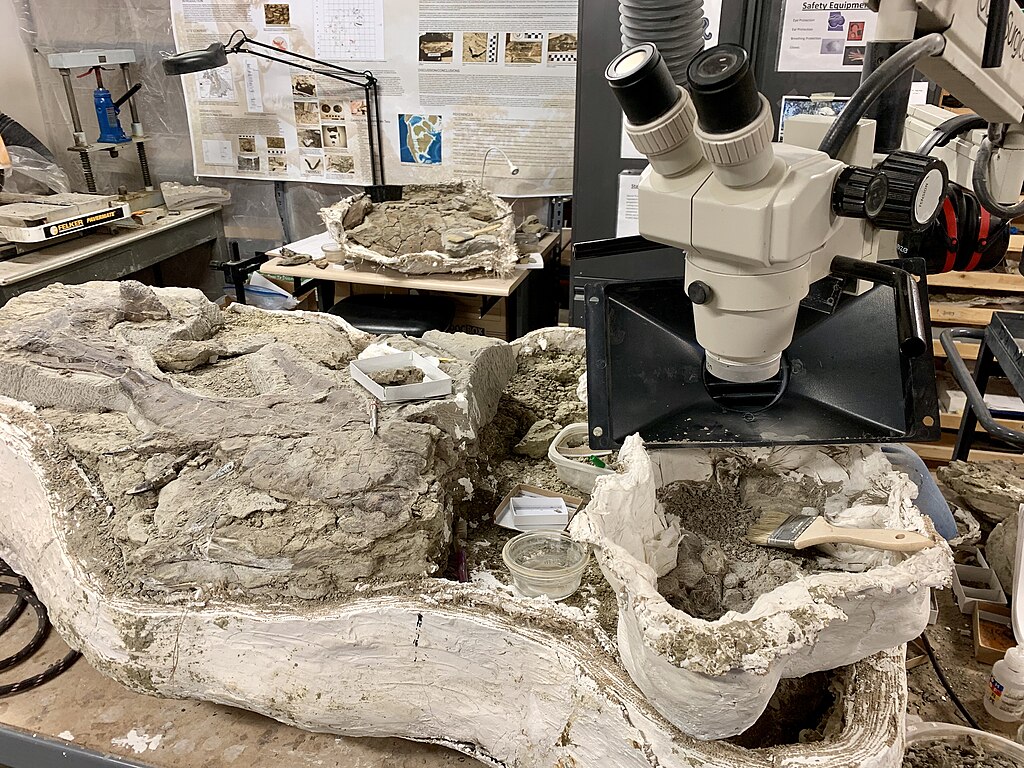
The discovery and study of car-sized prehistoric turtles involve meticulous scientific detective work spanning multiple disciplines. Paleontologists typically uncover these massive specimens in marine sedimentary deposits or ancient riverbed formations, where conditions were ideal for fossilization. The extraction process for such enormous fossils requires specialized techniques, often involving plaster jackets to protect the fragile remains during transportation to laboratory facilities. Once secured, scientists employ advanced imaging technologies like CT scanning to examine internal structures without damaging the specimens. Geochemical analysis of fossil bones and shells can reveal details about diet, habitat, and even average temperatures during the animal’s lifetime. Dating methods, including radiometric dating of surrounding rock layers, help establish precise timelines for when these magnificent creatures lived. Comparative anatomy plays a crucial role as well, allowing researchers to identify evolutionary relationships between ancient giants and modern turtle species. Each new discovery adds another piece to the complex puzzle of turtle evolution, helping scientists reconstruct the remarkable story of these resilient reptiles across millions of years.
Comparing Ancient Giants to Modern Turtles
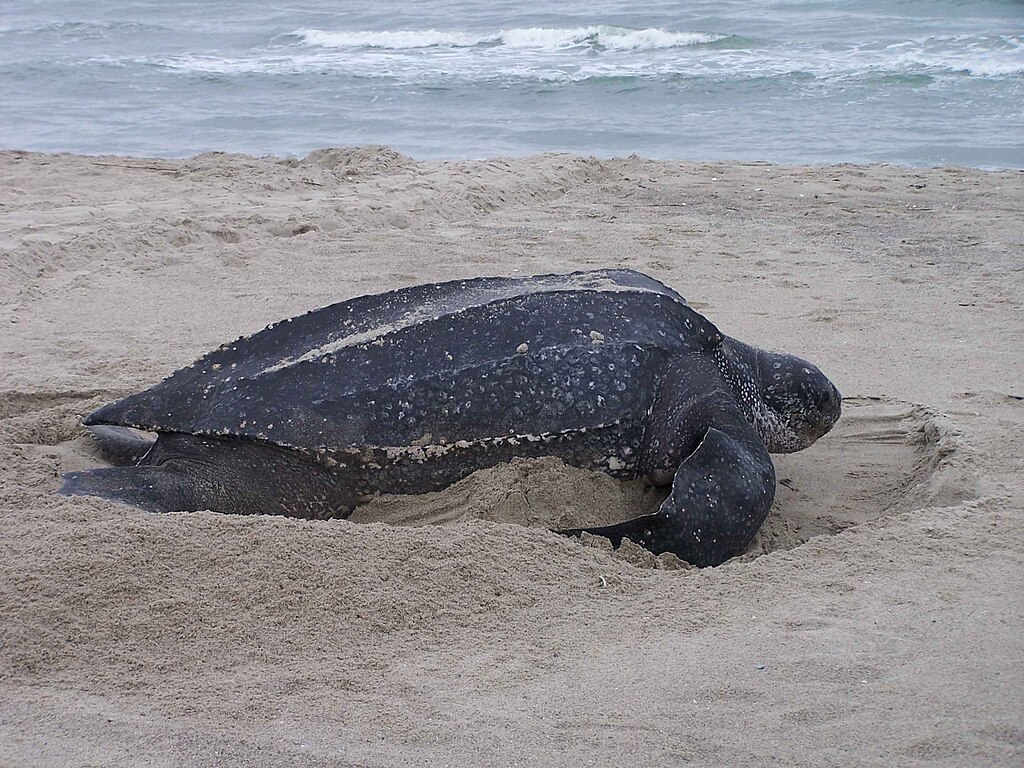
The difference between dinosaur-era turtles and their modern descendants is striking, highlighting the dramatic evolutionary changes that have occurred over millions of years. Today’s largest turtle, the leatherback sea turtle (Dermochelys coriacea), reaches approximately 7 feet (2.1 meters) in length and weighs up to 1,500 pounds (680 kg)—impressive, but still less than half the size of Archelon. The Galápagos tortoise, the largest living land turtle, typically measures just 4-5 feet (1.2-1.5 meters) in length, significantly smaller than prehistoric giants like Stupendemys. Beyond size, important anatomical differences exist as well. Many ancient giant turtles had reduced shell structures compared to modern species, with some featuring more cartilaginous components rather than fully ossified carapaces. Bite mechanics and feeding adaptations show substantial variation, reflecting different dietary specializations. However, the basic turtle body plan—with its characteristic shell and beak-like jaws—has remained remarkably consistent over 200+ million years, demonstrating the effectiveness of this evolutionary design despite dramatic changes in size and habitat preferences.
Extinction Factors: Why the Giants Disappeared

The disappearance of car-sized turtles from Earth’s ecosystems resulted from complex and interconnected extinction factors. The end-Cretaceous mass extinction event, triggered by an asteroid impact approximately 66 million years ago, eliminated many giant marine species, including Archelon, through catastrophic environmental changes and disruption of marine food webs. Climate cooling trends following the Cretaceous period created less favorable conditions for large ectothermic (cold-blooded) reptiles, which struggle to maintain necessary body temperatures in cooler environments. Competition from newly evolving mammalian predators and changing ecological dynamics after the dinosaurs’ extinction placed additional pressures on surviving turtle lineages. Habitat transformation, particularly the drainage of massive inland seas and changing river systems, eliminated crucial environments that once supported these aquatic giants. Later species like Stupendemys and Carbonemys faced additional challenges from continued climate fluctuations during the Cenozoic Era. Unlike some other reptile groups, turtles as a whole proved remarkably resilient, surviving through major extinction events but generally trending toward smaller body sizes as they adapted to Earth’s changing conditions and new ecological relationships.
Paleoecology: The Worlds They Inhabited
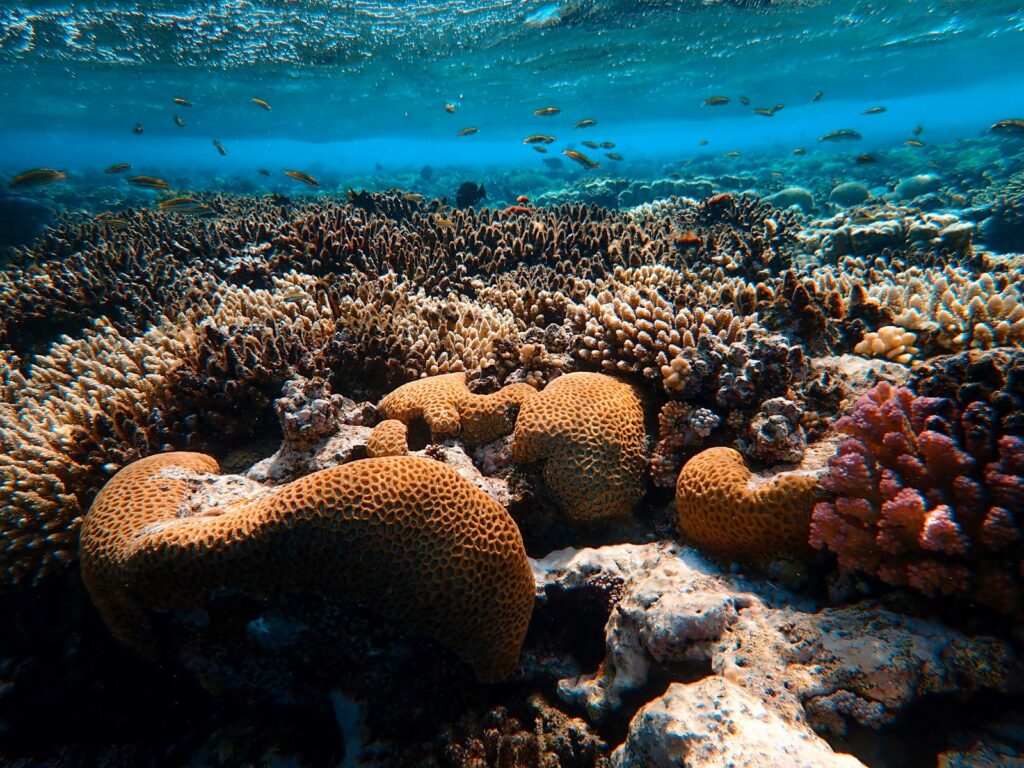
The massive turtles of the Mesozoic Era inhabited vastly different worlds compared to modern ecosystems. During the Late Cretaceous, when Archelon swam the prehistoric seas, global temperatures were significantly warmer than today, with minimal polar ice and sea levels up to 300 feet higher than present. These conditions created extensive shallow inland seas teeming with ammonites, mosasaurs, and other marine life that provided rich feeding opportunities for giant turtles. Stupendemys inhabited massive proto-Amazonian wetland systems characterized by sprawling lakes and interconnected waterways, where it shared its habitat with enormous caiman relatives and other megafauna. Terrestrial environments during these periods featured dramatically different plant communities, with flowering plants gradually gaining dominance over the conifers and ferns that characterized earlier Mesozoic landscapes. Atmospheric carbon dioxide levels were substantially higher than modern concentrations, creating greenhouse conditions that supported these enormous cold-blooded reptiles. Seasonal patterns and day lengths would have been familiar to modern observers, but virtually every aspect of the biological communities—from the smallest microorganisms to the largest predators—differed dramatically from contemporary ecosystems, creating unique ecological relationships that shaped the evolution of these remarkable turtle species.
Scientific Debates: Unanswered Questions
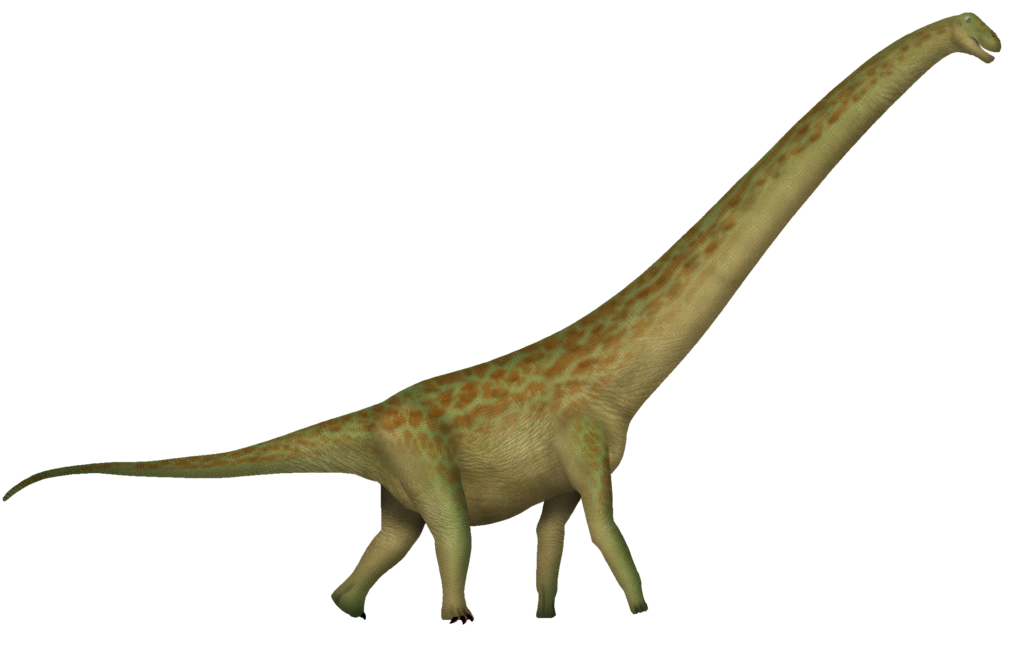
Despite significant paleontological discoveries, numerous scientific questions about car-sized prehistoric turtles remain hotly debated among researchers. One central controversy concerns precise growth rates and lifespans—did these giants grow rapidly like some dinosaurs, or did they follow the slower growth patterns seen in modern turtles but extended over much longer lifespans? The reproductive biology of these colossal chelonians presents another mystery, with uncertainties about clutch sizes, egg dimensions, and nesting behaviors that can only be partially inferred from fossil evidence. Thermoregulation strategies represent another active research question, with scientists debating whether giants like Archelon maintained elevated body temperatures through massive size alone or developed specialized physiological adaptations beyond those seen in modern turtles. Taxonomic relationships between these ancient giants and modern species continue to be refined as new specimens and analytical techniques become available. Perhaps most intriguingly, researchers continue to debate whether the upper size limits for these turtles were determined primarily by environmental factors or by physiological constraints inherent to the turtle body plan. These unresolved questions drive ongoing paleontological research, with each new discovery potentially reshaping our understanding of these remarkable prehistoric giants.
Cultural Impact and Public Fascination
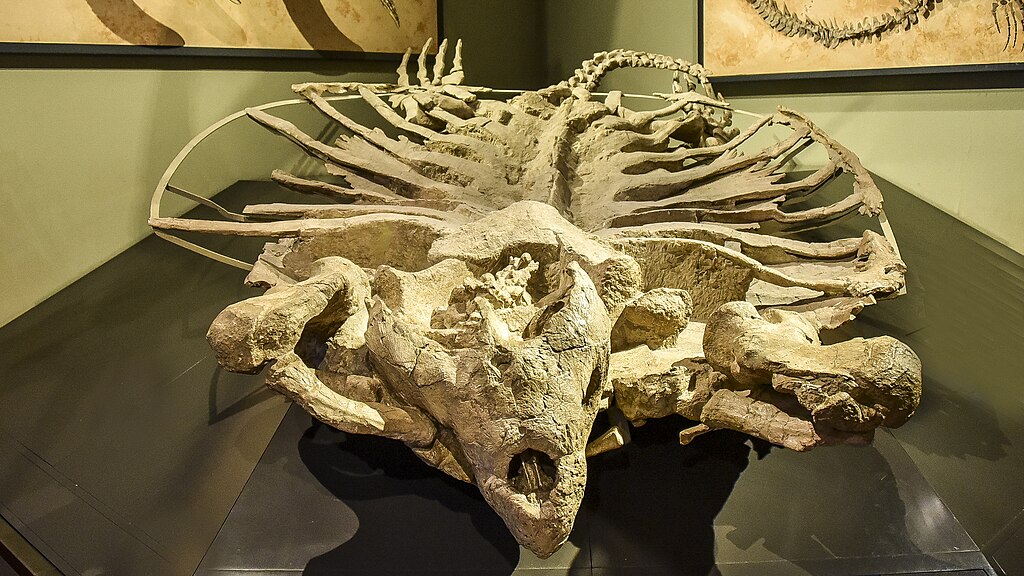
The discovery of car-sized prehistoric turtles has captured public imagination far beyond the scientific community, influencing popular culture and education about Earth’s prehistoric past. Museum exhibitions featuring life-sized replicas of Archelon and other giant turtles consistently rank among the most popular paleontological displays, providing visitors with tangible connections to these ancient behemoths. Documentary series like BBC’s “Walking with Dinosaurs” and various programs on networks such as National Geographic have featured these massive chelonians, bringing them to life through cutting-edge computer animation. Children’s books about prehistoric life frequently include these giant turtles alongside dinosaurs, helping to broaden young readers’ understanding of Mesozoic biodiversity beyond the most famous dinosaur species. Their impressive size makes these ancient turtles particularly effective educational tools for demonstrating evolutionary concepts and prehistoric ecology to general audiences. The cultural fascination with these enormous turtles also highlights a broader human interest in “gentle giants”—creatures that combined immense size with relatively peaceful lifestyles—creating a compelling contrast to the often predatory nature of other famously large prehistoric animals.
Modern Research Techniques and Recent Discoveries
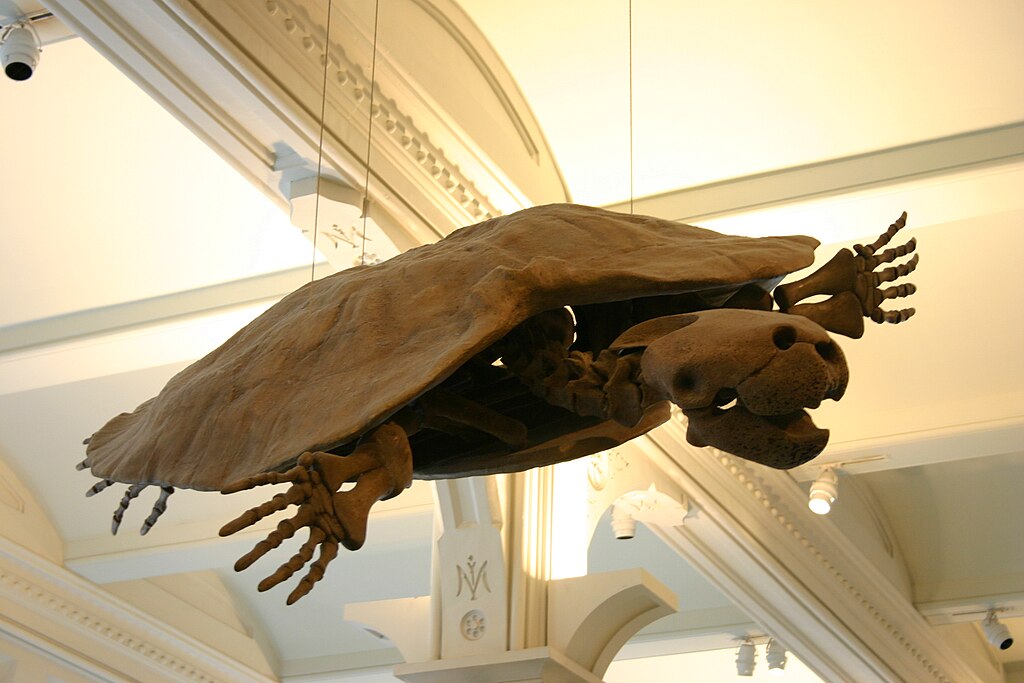
Advances in research technology have revolutionized our understanding of prehistoric giant turtles in recent decades. Geometric morphometrics now allows paleontologists to quantify subtle shape differences between specimens and species, revealing evolutionary relationships that were previously unclear. Stable isotope analysis of fossil remains provides detailed information about these animals’ diets, migration patterns, and the water temperatures they experienced during their lifetimes. Paleogenomics, though still challenging with ancient specimens, has begun yielding insights into the genetic basis for gigantism in turtle lineages when applied to more recent fossil material. Sophisticated computer modeling now enables scientists to simulate how these massive creatures moved through water, how their shells responded to pressure, and even how they might have regulated body temperature. Recent fieldwork continues to yield surprising discoveries, including a 2020 announcement of new Stupendemys specimens from Venezuela that revealed previously unknown features of male-female differences in this species. Three-dimensional printing technology has transformed how researchers and educators can interact with these fossils, allowing for the creation of accurate replicas that can be handled and studied without risking damage to irreplaceable original specimens. These methodological advances promise to continue expanding our knowledge of these fascinating prehistoric giants in the coming years.
Lessons for Modern Conservation

The story of Earth’s giant prehistoric turtles offers valuable insights for modern conservation efforts focused on protecting today’s chelonian species. The extinction of these magnificent creatures demonstrates how even highly successful animal groups can disappear when faced with rapid environmental changes that exceed their adaptive capacity. All seven existing sea turtle species now face endangered or threatened status, making the lessons from their giant ancestors particularly relevant. The specialized ecological niches occupied by prehistoric turtle giants highlight the importance of protecting diverse habitats to maintain evolutionary potential within modern turtle lineages. Fossil evidence of prehistoric turtle migration patterns underscores the need for international cooperation in protecting marine corridors and nesting beaches that cross political boundaries. Perhaps most importantly, the time scales of turtle evolution—with major changes occurring over millions of years—emphasize the irreversible nature of biodiversity loss in human timeframes. The disappearance of car-sized turtles serves as a powerful reminder that once these magnificent creatures vanish, similar species cannot simply re-evolve within timeframes meaningful to human civilization, adding urgency to conservation efforts for their smaller but equally remarkable modern relatives.
The fossil record clearly confirms that car-sized turtles did indeed swim Earth’s oceans and inhabit its freshwater systems during and after the age of dinosaurs. These remarkable creatures—Archelon, Stupendemys, Carbonemys, and others—represent some of the most impressive examples of reptilian gigantism in our planet’s history. Their massive proportions, specialized adaptations, and evolutionary success provide fascinating windows into prehistoric ecosystems dramatically different from our own. While modern turtles continue this ancient lineage in more modest dimensions, the memory of their car-sized ancestors enriches our understanding of life’s remarkable diversity through deep time. As paleontologists continue unearthing new specimens and applying advanced analytical techniques, our knowledge of these prehistoric giants will continue to grow, potentially revealing even larger species and more surprising adaptations than those currently known to science.



